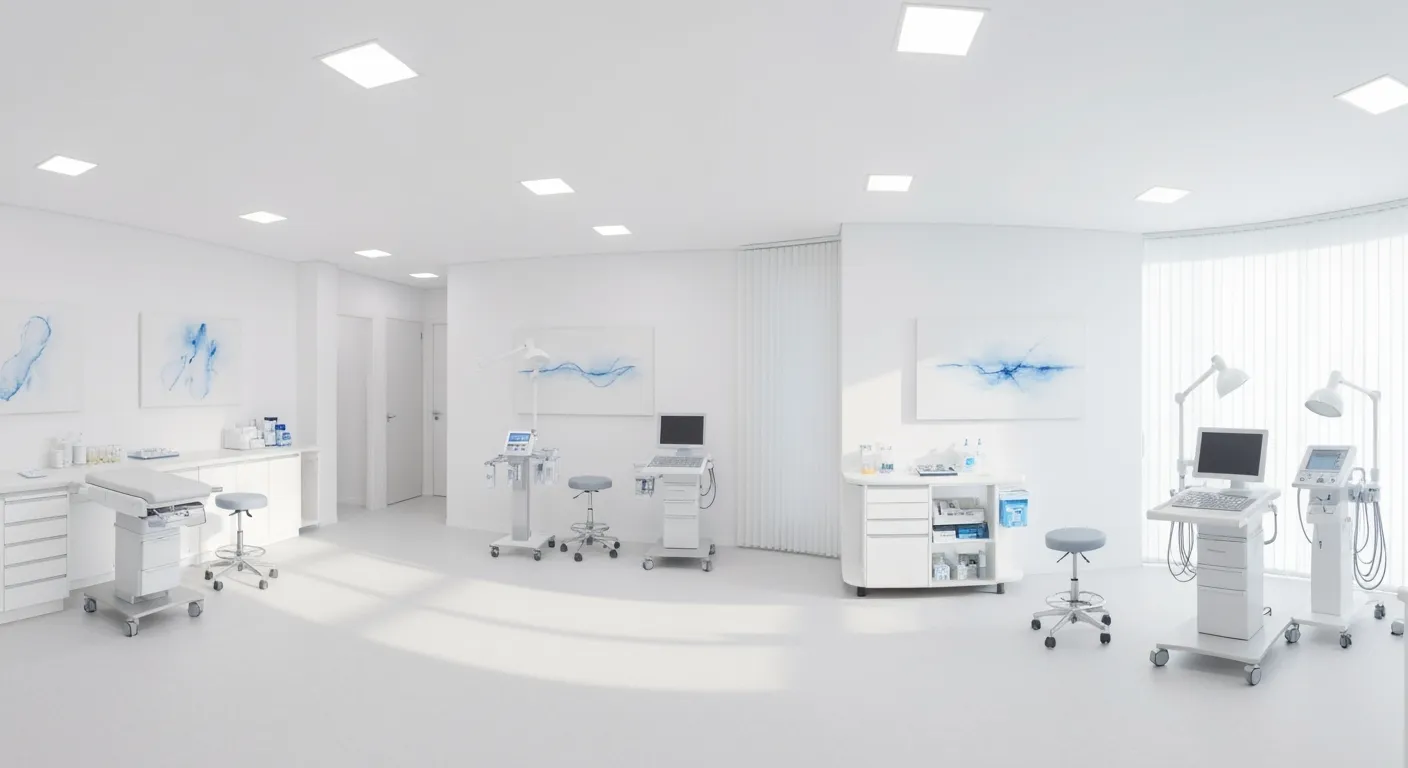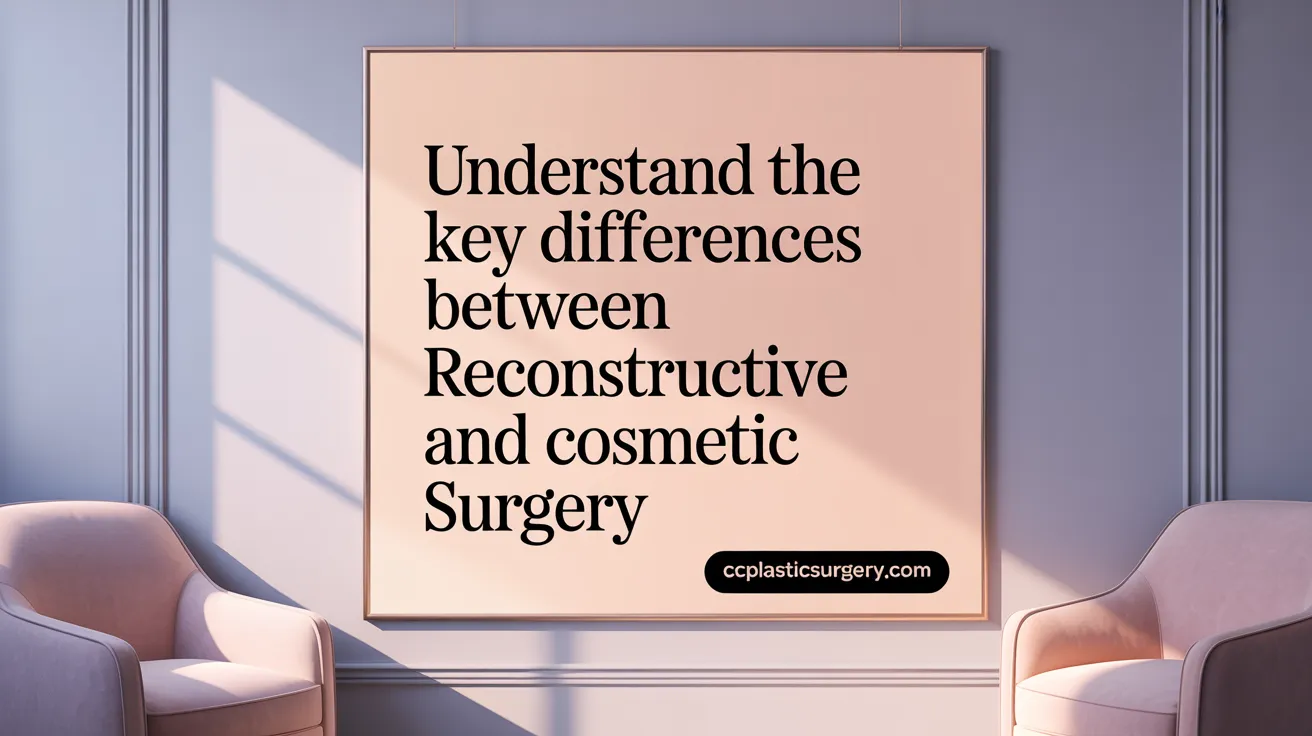
December 13, 2025
Mini Tummy Tuck vs. tummy tuck: Which Is Right for You
Discover the mini tummy tuck vs. tummy tuck differences, candidacy, recovery, scars, and cost to help you decide.
Oct 28, 2025

Plastic surgery encompasses a broad range of procedures that either aim to reconstruct abnormal body parts for functional restoration or enhance natural features to boost appearance and confidence. This article offers clear answers to frequently asked questions about popular plastic surgery procedures, emphasizing safety, common practices, advances in the field, and what patients can expect throughout the surgical journey.

Plastic surgery is broadly categorized into reconstructive surgery explained and cosmetic plastic surgery, each serving distinct purposes.
Reconstructive surgery is dedicated to correcting abnormal structures caused by congenital defects, trauma, infection, tumors, or disease. It aims to restore normal function and appearance. Common reconstructive procedures include burn repair, craniofacial surgery, hand surgery, microsurgery, and tumor removal.
Cosmetic surgery, in contrast, focuses on enhancing normal body structures to improve appearance and boost self-esteem. It involves elective procedures like breast augmentation, rhinoplasty, facelifts, and liposuction that re-shape and contour body features.
The primary goal of reconstructive surgery is to improve functionality and restore a patient's physical integrity after injury, disease, or birth defects (Plastic Surgery FAQ). Cosmetic surgery's objective is aesthetic enhancement, helping patients achieve desired physical improvements and increased confidence (Cosmetic Procedures).
Reconstructive surgeries are generally covered by health insurance because they are medically necessary to restore function or correct deformities (Cosmetic surgery insurance coverage. Cosmetic surgeries are typically elective and performed to improve appearance; therefore, they are usually not covered by insurance (Cosmetic plastic surgery and insurance). Patients seeking cosmetic procedures often explore financing options independently.
Understanding these distinctions helps patients set appropriate expectations and navigate care options aligned with their medical and aesthetic needs (Cosmetic surgery overview.
Facial plastic surgery includes several types aimed at both improving appearance and addressing functional issues. Common procedures include:
Additional surgeries include cheek implants, neck lifts, ear reshaping (otoplasty), and skin resurfacing treatments like laser therapy and dermabrasion. Reconstructive surgeries also address congenital defects such as cleft lip and palate or trauma-related deformities.
Facial plastic procedures serve dual purposes: to restore function where it is impaired (e.g., breathing difficulties via rhinoplasty or vision obstruction through eyelid surgery) and to enhance aesthetic appeal by counteracting signs of aging or creating facial balance. Patients experience improved self-esteem alongside functional benefits.
Many facial surgeries can be combined or tailored according to patient needs. For example, a facelift might be paired with a brow lift and eyelid surgery for comprehensive rejuvenation. Custom plans are created during consultation to achieve natural, balanced outcomes.
Safety and quality of facial plastic surgery depend heavily on surgeon expertise. Choosing a surgeon certified by the American Board of Plastic Surgery or an equivalent board ensures rigorous training, experience, and adherence to high standards. Board-certified surgeons operate in accredited facilities, minimizing risks and enhancing patient confidence.

Common cosmetic surgical procedures include breast augmentation (augmentation mammaplasty), breast lifts (mastopexy), and tummy tucks (abdominoplasty). Liposuction is widely performed to reshape body contours, targeting areas like the abdomen, hips, thighs, and waist. Facial surgeries such as eyelid surgery (blepharoplasty), rhinoplasty, and facelifts also remain popular. Body contouring options include buttock lifts, arm lifts, and thigh lifts. Breast reduction and reconstructive procedures are options for those needing functional as well as aesthetic improvements.
Beyond surgery, nonsurgical treatments have gained popularity. These include Botox injections to smooth wrinkles, dermal fillers like Restylane®, chemical peels, laser skin resurfacing, and laser hair removal. Both surgical and nonsurgical procedures cater to a wide range of goals, from subtle enhancements to dramatic transformations, guided by board-certified plastic surgeons who prioritize patient safety and effective results.
In 2022, liposuction was the most performed cosmetic surgery, showing a 23% increase since 2019 with over 325,000 procedures. Breast augmentation followed closely with nearly 300,000 cases, while abdominoplasty (tummy tuck) and breast lifts also saw notable surges, with breast lifts increasing by 30% and breast reductions rising 54%, reflecting shifting patient preferences.
Eyelid surgery (blepharoplasty) rounds out the top five surgical procedures, highlighting ongoing demand for facial rejuvenation. Minimally invasive treatments such as neuromodulator injections (e.g., Botox) and hyaluronic acid fillers maintain immense popularity, offering quick recovery and temporary but visible improvements.
The trend of cosmetic procedures is expanding across age groups, predominantly amongst Generation X and Baby Boomers, who seek both surgical and nonsurgical aging interventions. Men now represent a growing patient base, accounting for over 1.5 million cosmetic treatments, including procedures like gynecomastia surgery, hair transplantation, and nonsurgical options such as Botox and liposuction.
Social media and increased transparency have driven wider acceptance and heightened interest, contributing to the upward trend in procedures globally. More details on trends can be found in the American Society of Plastic Surgeons 2022 report.
Body contouring after significant weight loss is increasingly requested, with procedures like thigh lifts and body lifts offering reshaping and tightening. Male-specific cosmetic procedures such as gynecomastia surgery and hair restoration address unique aesthetic concerns.
Overall, the spectrum of surgical and nonsurgical cosmetic procedures continues to broaden, reflecting advances in techniques and evolving patient expectations for aesthetic enhancement and confidence boosting. See more about safety and quality in cosmetic surgery and cosmetic surgery FAQs for detailed guidance.

Plastic surgery encompasses various subspecialties tailored to distinct patient needs. Reconstructive surgeons repair abnormalities caused by congenital defects (like cleft lip and palate), trauma, burns, or cancer, including breast reconstruction after mastectomy. Cosmetic surgeons focus on enhancing appearance with procedures such as facelifts, rhinoplasty (nose reshaping), breast augmentation, liposuction, and eyelid surgery. Additional specialized fields include craniofacial surgery, hand surgery, microsurgery, pediatric plastic surgery, and burn treatment. Many surgeons gain expertise in multiple areas, blending aesthetic improvements with functional restoration.
Board certification by recognized bodies, such as the American Board of Plastic Surgery (ABPS) or the American Board of Cosmetic Surgery (ABCS), is a mark of a surgeon’s extensive education, training, and competence. Certification requires completing rigorous residency programs, passing comprehensive exams, and maintaining ongoing education and practice standards. Choosing a board-certified surgeon ensures they have met high professional standards and are equipped to provide safe, effective care.
Patients should verify a surgeon’s credentials by checking their board certification status through official databases. Confirming a surgeon’s training background, experience with specific procedures, and patient reviews is essential for informed decision-making. Before surgery, it is advisable to ask surgeons about their experience, see before-and-after photos of their work, and discuss potential risks and expected outcomes. For more guidance, see questions to ask your plastic surgeon and consultation checklist.
Surgeons who hold hospital privileges have the authority to perform surgeries in accredited hospitals, indicating recognized qualifications. Surgical procedures are safest when performed in facilities accredited by organizations like the Joint Commission (JCAHO) or state health departments. Accredited centers meet strict standards for safety, staff training, and infection control. Ensuring both the surgeon and surgical facility are properly accredited is vital for patient safety and quality outcomes. Information about surgical center accreditation and surgeon certification standards is helpful to review.

The cost of plastic surgery varies widely based on several important factors. Surgical procedures such as facelifts generally range between $4,130 and $18,866, while breast augmentations average around $9,000 to $10,000. Non-surgical treatments like Botox typically cost roughly $420 per session.
Key elements affecting cost include:
Financing plans like CareCredit are often available to help patients manage expenses effectively.
Plastic surgery continues to advance with innovations focusing on natural results, less invasiveness, and quicker recovery.
Recent breakthroughs include:
These advances emphasize personalized care with a balance between safety and aesthetics, catering to growing patient demand for natural yet impactful enhancements.

Procedures such as abdominoplasty (tummy tuck), extensive jaw surgeries (like V-line surgery), and larger reconstructive or complex rhinoplasties tend to be more painful due to deeper tissue work and significant invasiveness. Breast lifts or reductions involving an inverted "T" incision often result in moderate to severe pain around incision sites during the initial days post-surgery.
Postoperative pain varies by procedure:
Recovery is quicker for less invasive procedures and can include outpatient surgeries where patients return home the same day. See more on outpatient cosmetic surgery process and surgical center accreditation.
To aid healing and reduce pain, patients should:
For detailed postoperative care and managing swelling and bruising, consult surgeon's guidance.
Realistic expectations minimize dissatisfaction and stress. Surgeons should discuss:
Open communication and thorough preoperative evaluation and testing ensure patients are prepared for their unique recovery.
| Procedure Type | Pain Level | Typical Recovery Time | Special Care Tips |
|---|---|---|---|
| Abdominoplasty | High | 6+ weeks | Avoid strenuous activity, manage pain carefully |
| Liposuction | Moderate to High | Days to weeks | Use compression garments, swelling management |
| Breast Lift/Reduction | Moderate to High | 1-2 weeks | Incision care, pain medication |
| Breast Augmentation | Moderate | 1-2 weeks | Support bras, avoid heavy lifting |
| Facelift/Mini Facelift | Moderate | 1-2 weeks | Head elevation, cold compresses |
Understanding the distinctions between reconstructive and cosmetic plastic surgery, the most commonly performed procedures, and the qualifications required of surgeons is fundamental when considering plastic surgery. Safety remains paramount, as does realistic expectation of outcomes and recovery. With ongoing advancements and evolving techniques, patients have increasingly effective and individualized options available. Always consult with a board-certified plastic surgeon to ensure informed decision-making tailored to your unique goals and health needs. Financing options and comprehensive preoperative planning further support a successful surgical experience and satisfactory results.

December 13, 2025
Discover the mini tummy tuck vs. tummy tuck differences, candidacy, recovery, scars, and cost to help you decide.
December 12, 2025
Deciding between silicone vs saline breast implants? This guide compares feel, safety, rupture risks, and costs to help you make an informed choice.

December 12, 2025
Inspiring Journeys: How Real Patients Achieved Remarkable Transformations